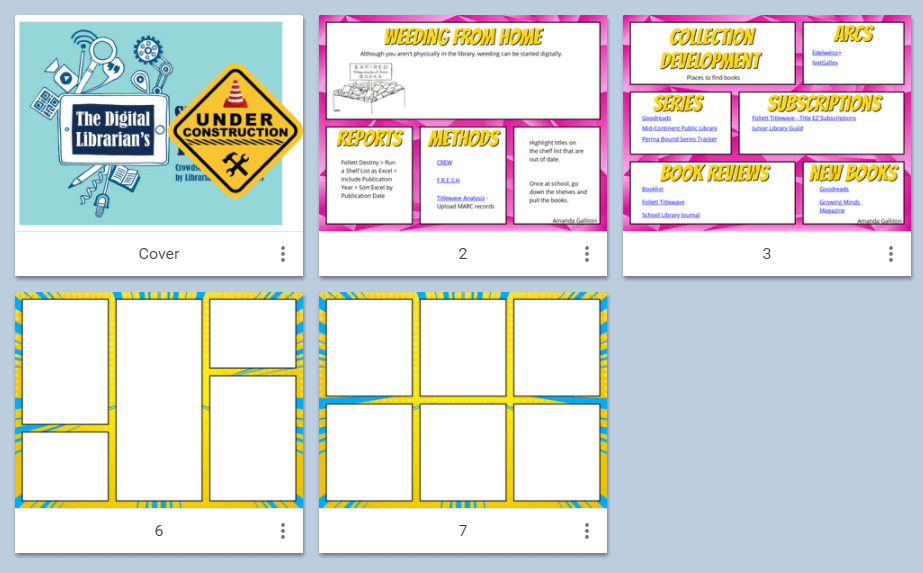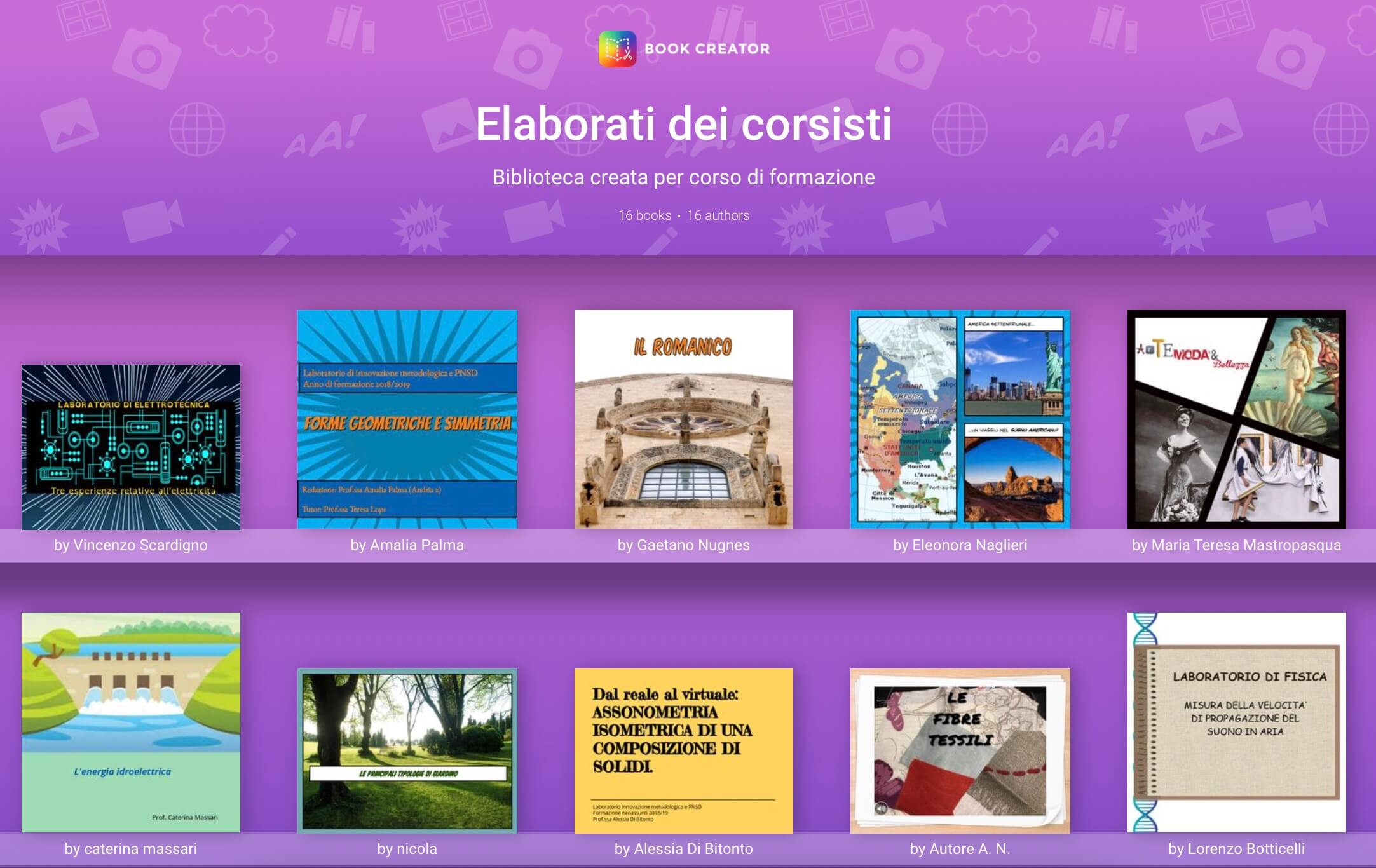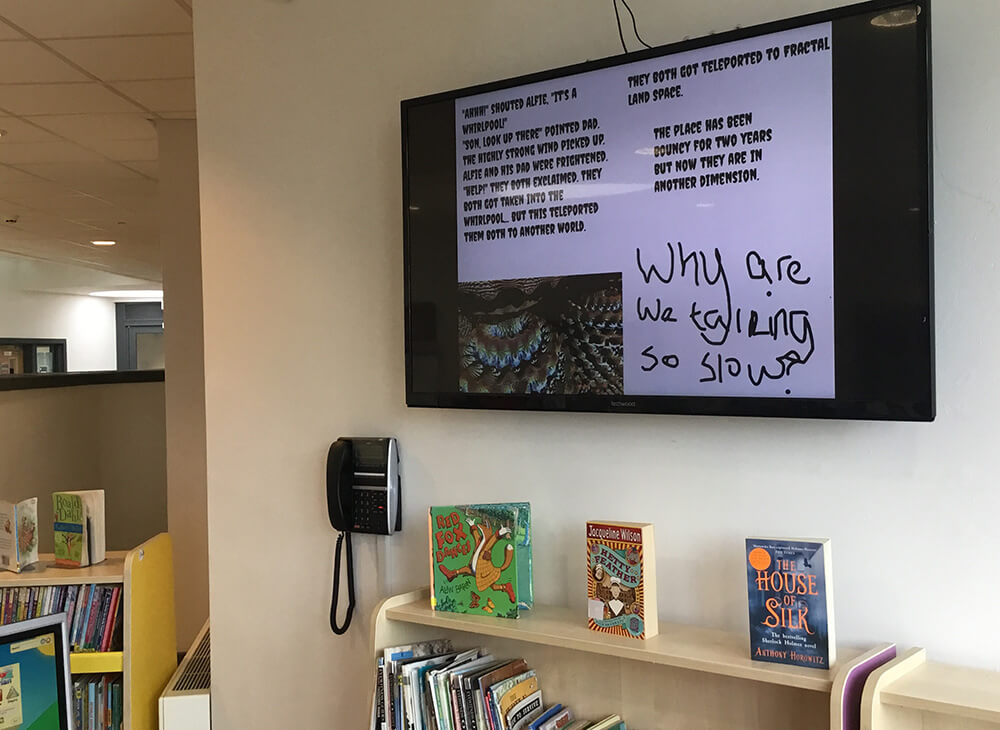The story behind the 'The Epic Ebook of Web Tools & Apps' and 'The Digital Librarian's Survival Toolkit'.
I first learned about Book Creator as an iPad app. When I was a middle school librarian I offered Book Creator as a digital making option in our makerspace. That was at least 5 years ago, and I didn't realize the potential of using Book Creator.
In my new role as an edtech specialist librarian in a high school setting, I revisited Book Creator as a web tool for our Chromebooks. Book Creator was used extensively in our elementary schools and, late last winter, our district purchased a subscription for all teachers K-12.
My colleagues and I, along with the district assistive technology professional and the elementary technology support specialist, were asked to present to the school board on the Universal Design for Learning technologies that we were using in our district to support all learners. Through this presentation I learned even more about the magic of Book Creator, and have been assisting our high school faculty to develop ways to integrate this tool into their assessments. In fact, I demonstrated to our Public Information Officer and her secretary how to use Book Creator to celebrate our retiree and silver anniversary honorees!
Moving to remote learning and thinking collaboratively
When we first moved to remote learning in March I was trying to find a way to support teachers all over the world. I first created a "You Can Write a How-To Book" ebook that explained my journey of writing makerspace STEM books for Scholastic. I included a STEM project for the students to complete, as well as discussion questions, and a link to Flipgrid where students could reflect on their experience. This ebook was translated into Spanish by a native speaking friend of mine, with my audio spoken in Spanish.
Webinars are wonderful, but they can be boring for more advanced users to wait for beginners to "catch up" and it can be frustrating for beginners who feel rushed.Also at this time I began exploring ways to deliver professional development to teachers. Webinars are wonderful, but they can be boring for more advanced users to wait for beginners to "catch up" and it can be frustrating for beginners who feel rushed. So I created 3 leveled books for Flipgrid so teachers could "level up" or "level down" as they felt comfortable. Each book includes text and videos, and were received very well.
Later on in the spring, I began thinking about writing my own book about remote learning strategies and best practices but I decided not to. My priority was to support the teachers in my district, and with 3 young children at home remote learning, it was a challenge. I didn't want to spend valuable time searching for a publisher, writing a manuscript, and waiting for a book to be printed. I prefer printed books over digital ones, but I knew that in order for a guide to be practical it needed to contain multimedia elements including videos, audio, images, and text. I also realized that I needed to crowdsource this project in the interest of time, and that I couldn't do it alone.
I believe that the success of these two books "The Epic Ebook of Web Tools & Apps" and "The Digital Librarian's Survival Toolkit" is because they were the result of collaborative efforts from a variety of educators all around the world. Since I am a published author, I wanted others to feel the same exhiliaration of being published without being intimidated by writing an entire book on their own. As a school librarian, I believe that these ebooks are powerful tools for advocacy. In fact, many contributors use these ebooks as springboards to collaborative conversations with their colleagues.
I chose Book Creator over Google Slides because it has that experience of turning pages, and is also very easy to insert and directly record audio and video. I wanted to use a tool that was user-friendly, flexible, and collaborative. Many of our contributors had never used Book Creator before and now are advocating to use it in their districts.
The creation process
To find my co-authors, in May I began posting in my Hacking School Libraries Facebook group, as well as other Facebook groups related to education, libraries, and technology. I also specifically invited school librarians in my county to contribute to "The Digital Librarian's Survival Toolkit" through our list serv. I reached out to friends of mine to ask them to work on specific sections.
To begin organizing the content for each of these two books, I created a Google Form for potential contributors to submit their proposals. I scanned the responses to see if there were any duplicates and informed the educators so that they could resubmit another idea. To be honest, I learned more about how the books would look while going through the process. I had an idea of the end product, but realized that more when I began seeing what teachers were creating.

I shared the library code to allow teachers to join my library. I then turned on collaboration so each teacher could edit their own pages in the book. I had already created blank pages with teachers' names on them so they would have a designated place to work. Each section included even-numbered page spreads, since I thought it would be easier on the eye. One trick that helped me was to make everyone's pages different colors. This way I could quickly scan the pages in the page view to see how many sections were in the book.
I've been told many times by our contributors that they enjoyed the process so much because they were able to learn from one another. They learned how to use Book Creator, and they learned about content that they had been unfamiliar with.I'm glad that I began the project by choosing the landscape comic layout. Whether or not people used the layouts, they at least had the option. As the project unfolded I began to see patterns... bitmojis, stickers, speech bubbles began popping up on pages. I've been told many times by our contributors that they enjoyed the process so much because they were able to learn from one another. They learned how to use Book Creator, and they learned about content that they had been unfamiliar with.
After school ended in June (with a short sigh of relief!) I began contacting the contributors, those who had completed their pages, those who were partially complete, and those who had not begun writing. The Google Form and spreadsheet were invaluable to organizing these two major undertakings. After communicating through emails, Facebook messenger, and Twitter direct messages, we released "The Epic Ebook of Web Tools & Apps" on August 8 and "The Digital Librarian's Survival Toolkit" on August 15.
The Epic Ebook of Web Tools & Apps and The Digital Librarian's Survival Toolkit are only 2 free ebooks available on my website for #remoteteaching #remotelearning #distancelearning https://t.co/uap75FHPA9#education #libraries #HackingSchoolLibraries pic.twitter.com/bdz20af3Y1
— ⭐Kristina A. Holzweiss - #HackingSchoolLibraries⭐ (@lieberrian) August 17, 2020
Lessons learned
My favorite thing about this project is that I have helped people come together for the greater good. The 50 educator contributors of "The Epic Ebook of Web Tools & Apps" and the 35 school librarian contributors "The Digital Librarian's Survival Toolkit" may never see one another face to face, but they are part of something that is bigger than all of them.
They took the time and effort to share their expertise with others around the world to make their lives easier and to enrich their teaching. There is a such a sense of camaraderie and collaboration on social media, but many educators are still not connected with one another. These ebooks also give these educators access to some of the best tutorials and creative ideas that you will ever see. I'm still so amazed by the power of a simple link to give access to a multitude of videos, audio messages, images, and text that theses contributors created.
I had originally envisioned these books to be completed during the spring, but that was unrealistic. We are all so busy trying to teach our students, their teachers, and even our own children that the bulk of these pages were completed during June and July. I had been over ambitious, so now I realize the importance of timing. I have a better understanding of deadlines and milestones.
Towards the middle of June, Book Creator offered a Certified Author program. I encouraged contributors who hadn't begun writing their sections yet to participate. Now, Book Creator Certified Author Level 1 status is a requirement to becoming a contributor. After participating in this program they feel much more confident about writing. I want them to be able to focus on the content rather than the mechanics of using the app.
I have created "sandboxes" for these 2 ebooks so new contributors or those who needed extensions, can complete their sections before I copy them into the published books.
I feel like I have really been able to hone this process over time, and we already have the following titles in progress!
- A Digital Teacher's Social Emotional Learning Toolkit
- A Digital Teacher's Reading and Writing Toolkit
- A Digital Teacher's Gamification in Education Toolkit
- A Digital Teacher's Makerspace Toolkit
- A Digital Teacher's World Language Toolkit
- A Digital Teacher's Visual and Media Arts Toolkit
If you'd like to contribute to any of these new collaborative ebooks, please reach out to me on Twitter @lieberrian.
BONUS! Interview with Kristina
In August our Teacher Success Manager Jon Smith spoke to Kristina for a live webinar. Watch the interview below.
Kristina A. Holzweiss is a high school educational technology enrichment specialist on Long Island, New York. Kristina was named the School Library Journal Librarian of the Year in 2015, a National School Board 2016 – 2017 “20 to Watch” emerging education technology leader, and a 2018 Library Journal Mover & Shaker. She is also the winner of the 2015 NYSCATE Lee Bryant Outstanding Teacher Award and 2015 Long Island Technology Summit Fred Podolski Leadership and Innovation Award. She shares ideas and resources about her school library and makerspaces on her website.










2 Comments on “Epic Ebooks are Epic!”
Hi Kristina,
Trish Hinchman and I were wondering if you have room for MOTE, BLOOKET, BAAMBOOZLE, GO GUARDIAN?
I absolutely loved this post! The Book Creator app sounds amazing for bringing stories to life. I can’t wait to dive into Epic Ebooks and start creating my own adventures. Thanks for sharing such great insights!